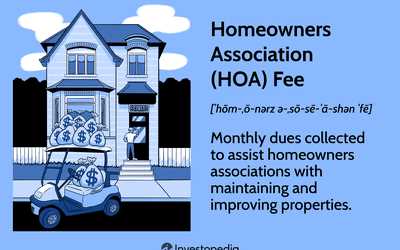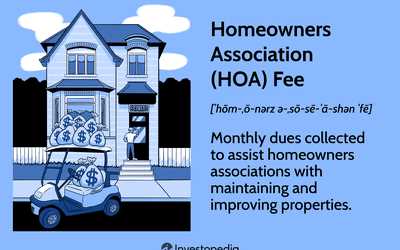Roles and Responsibilities of Homeowners Associations

One of the primary responsibilities of HOAs is to enforce the rules and regulations set forth in the community’s governing documents. These rules may include guidelines for property maintenance, noise restrictions, and architectural standards. By enforcing these rules, HOAs aim to maintain the overall appearance and quality of the community.
HOAs also play a vital role in managing common areas within the community. This includes maintaining parks, playgrounds, swimming pools, and other shared amenities. They are responsible for ensuring these areas are well-maintained, safe, and accessible to all residents. Additionally, HOAs may organize community events and social activities to foster a sense of community among homeowners.
Another important responsibility of HOAs is the collection of fees from homeowners. These fees, often referred to as assessments, are used to cover the costs of maintaining common areas, hiring staff, and funding community projects. HOAs have the authority to enforce the collection of these fees and may impose penalties or fines for non-payment.
HOAs also have the power to make decisions on behalf of the community. This includes approving architectural changes, implementing new rules or policies, and managing the association’s finances. They typically have a board of directors or a governing body that is elected by homeowners to make these decisions.
It is important for homeowners considering membership in an HOA to understand the roles and responsibilities of the association. This includes reviewing the governing documents, attending meetings, and actively participating in the decision-making process. By doing so, homeowners can ensure that their community is well-maintained, their rights are protected, and their voices are heard.
Benefits and Drawbacks of Homeowners Associations
Benefits of Homeowners Associations
1. Community Amenities: One of the main benefits of homeowners associations is access to community amenities. These can include swimming pools, tennis courts, playgrounds, and fitness centers. These amenities can enhance your quality of life and provide opportunities for socializing and recreation.
2. Maintenance and Upkeep: HOAs are responsible for maintaining and repairing common areas and shared facilities. This can include landscaping, snow removal, and exterior maintenance of buildings. By pooling resources, HOAs can ensure that the community remains well-maintained and attractive.
3. Rules and Regulations: HOAs typically have rules and regulations in place to maintain the appearance and value of the community. These rules can help prevent issues such as unkempt yards, loud noise, and unsightly modifications to homes. By enforcing these rules, HOAs can help protect property values and create a harmonious living environment.
4. Dispute Resolution: HOAs often have procedures in place for resolving disputes between residents. This can help prevent conflicts from escalating and provide a structured process for addressing concerns. By having a neutral third party mediate disputes, HOAs can help maintain a peaceful and cohesive community.
Drawbacks of Homeowners Associations
1. Fees and Assessments: One of the main drawbacks of homeowners associations is the cost. Members are typically required to pay monthly or annual fees to cover the expenses of the association. In addition, special assessments may be levied for unexpected expenses or major repairs. These fees can add up and may be a financial burden for some homeowners.
2. Loss of Autonomy: When you become a member of a homeowners association, you must adhere to the rules and regulations set forth by the association. This can limit your freedom to make changes to your property or engage in certain activities. Some homeowners may find this loss of autonomy to be restrictive.
Important Considerations for Homeowners Association Membership

Joining a homeowners association (HOA) can have both benefits and drawbacks. Before deciding to become a member, it is important to consider several key factors to ensure that it aligns with your lifestyle and preferences.
1. Rules and Regulations
2. Fees and Assessments
HOAs typically require their members to pay regular fees and assessments to cover the costs of maintaining common areas, amenities, and other shared expenses. Before joining, it is important to understand the amount and frequency of these fees, as well as any potential special assessments that may be levied in the future. Consider whether these fees fit within your budget and if you believe they provide value for the services and amenities offered.
3. Community Involvement
Homeowners associations often encourage community involvement and may require members to participate in meetings, committees, or other activities. Consider whether you are willing and able to commit the time and effort required for community involvement. Additionally, assess the level of community engagement within the HOA and determine if it aligns with your desire for a close-knit community or a more hands-off approach.
4. Dispute Resolution

In the event of conflicts or disputes within the community, homeowners associations typically have established processes for resolving issues. Familiarize yourself with these processes and determine if they are fair and effective in addressing disputes. Consider whether you are comfortable with the association’s authority to enforce rules and regulations and how they handle potential violations.
5. Long-Term Commitment
Joining an HOA often entails a long-term commitment, as membership is typically tied to property ownership. Before becoming a member, consider your long-term plans for the property and whether you are comfortable with the ongoing obligations and responsibilities that come with HOA membership. Assess whether the benefits of the HOA outweigh any potential drawbacks in the long run.

Emily Bibb simplifies finance through bestselling books and articles, bridging complex concepts for everyday understanding. Engaging audiences via social media, she shares insights for financial success. Active in seminars and philanthropy, Bibb aims to create a more financially informed society, driven by her passion for empowering others.
